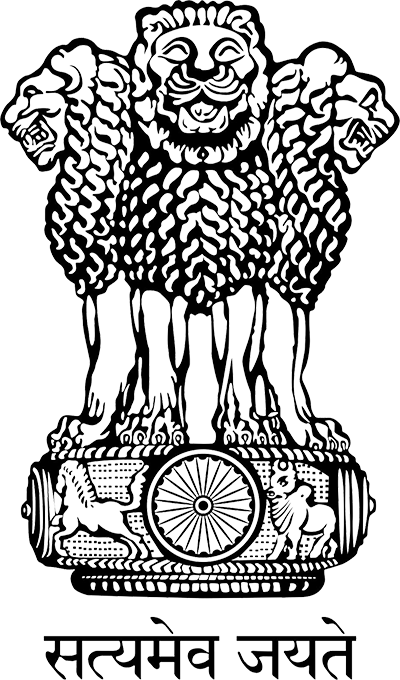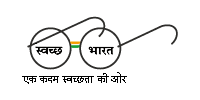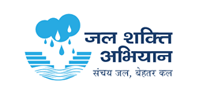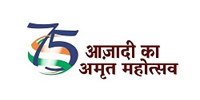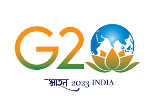Mechanization is crucial in the context of the growing commercialization of agriculture. The application of farm machineries is increasing continuously in Indian Agriculture as it contributed to the increase in productivity due to timeliness of operations and increased precision in input application. When compared to industrialized economies, where farm mechanization has exceeded 90%, India's farm mechanization level is still between 40 and 45%. The adoption of farm mechanization among the Indian farming community is highly imperative and need of the hour for continuing and sustainable development. The adoption of mechanized solutions in Indian agriculture is being driven by a number of macroeconomic and inherent factors, including the growing population, urbanization, and surge in agri. exports like tractors, improved flow of agricultural credit, labour migration, and shortages, in addition to the agricultural, social, and economic growth drivers of mechanization. In the contemporary scenario, farm mechanization start-ups, especially those built on the farming as a service (FAAS) model, are rapidly integrating technology with an emphasis on precision agriculture in India. In order to increase the effectiveness of their equipment and obtain a competitive advantage, the majority of agriculture equipment manufacturers are currently concentrating on integrating various technologies, such as robotics, Global Positioning System (GPS), and navigation systems. This is paving the way for Farm Mechanization 2.0 in Indian agriculture. The average farm power availability for the cultivated areas of the country has also been increased from 0.48 kW/ha (1975-76) to 1.84 kW /ha (2013-14) and 2.49 kW/ha (2018-19), which needs to be increased to 4.0 kW/ha by the end of 2030 to cope up with increasing demand of food grains.
This will call for greater engineering inputs, which will require developments and introduction of high capacity, precision, reliable and energy efficient equipment. Looking at the pattern of land holding in India, it may be noted that about 84 % of the holdings are below 1 ha. There is a need for special efforts in farm mechanization for these categories of farmers to enhance production and productivity of agriculture. In the existing scenario of land fragmentation and resulting continued shrinkage of average size of operational holdings, percentage of marginal, small and semi-medium operational holdings is likely to increase. Such small holding makes individual ownership of agricultural machinery uneconomic and operationally unviable. ‘Custom Hiring Centers of Agricultural Machineries’ operated by Cooperative Societies, Self Help Groups and private/rural entrepreneur are the best alternative in enabling easy availability of farm machineries to the farmers and bringing about improvement of farm productivity for the benefits of Small & Marginal farmers. Department of Agriculture & Farmers Welfare has integrated the components of agricultural mechanization under various schemes and programmes aiming at catalyzing an accelerated but inclusive growth of agricultural mechanization in India. The following specific interventions with a special emphasis on ‘reaching the unreached’ will bring small and marginal farmers’ at the core. With this aim the Ministry of Agriculture and Farmers Welfare, Department of Agriculture and Farmers Welfare, Mechanization and Technology Division has formulated a dedicated scheme “Sub Mission on Agricultural Mechanization” with following components;
- Promotion and Strengthening of Agricultural Mechanization through Training, Testing and Demonstration: Aims to ensure performance testing of agricultural machinery and equipment, capacity building of farmers and end users and promoting farm mechanization through demonstrations.
- Demonstration, Training and Distribution of Post-Harvest Technology and Management (PHTM): Aims at popularizing technology for primary processing, value addition, low cost scientific storage/transport and the crop by-product management through demonstrations, capacity building of farmers and end users. Provides financial assistance for establishing PHT units.
- Financial Assistance for Procurement of Agriculture Machinery and Equipment: Promotes ownership of various agricultural machinery & equipments as per norms of assistance.
- Establish Farm Machinery Banks for Custom Hiring: Provides suitable financial assistance to establish Farm Machinery Banks for Custom Hiring for appropriate locations and crops.
- Establish Hi-Tech, High Productive Equipment Hub for Custom Hiring: Provides financial assistance to set up hi-tech machinery hubs for high value crops like sugarcane, cotton etc.
- Promotion of Farm Mechanization in Selected Villages: Provides financial assistance to promote appropriate technologies and to set up Farm Machinery Banks in identified villages in low mechanized states.
- Financial Assistance for Promotion of Mechanized Operations/hectare Carried out Through Custom Hiring Centers: Provides financial assistance on per hectare basis to the beneficiaries hiring machinery/equipments from custom hiring centers in low mechanized areas.
- Promotion of Farm Machinery and Equipment in North-Eastern Region: Extends financial assistance to beneficiaries in high potential but low mechanized states of northeast.
- Promotion of Drone Technology: Extends financial assistance to beneficiaries like FPOs 75 % cost of Drone up to a maximum Rs. 7.5 Lakh , for individuals Framers like SC, ST, Small, Marginal, Women and NE state Farmers 50 % cost of Drone up to a maximum Rs. 5 Lakh and for other individuals farmers 40 % cost of Drone up to a maximum Rs. 4 Lakh.
SMAM will have Central Sector Schemes under component No.1 & 2 in which Government of India contributes 100%. Centrally Sponsored Schemes are covered under component No. 3 to 8 including Administrative and Flexi funds in which Government of India contributes 60% and states contribute 40% except North eastern states and Himalayan regions states where it is 90 %(Central Share) and 10% (State Share). For Union Territories, it is 100% center share.
The subsidy on tractors and power tillers is available on the models approved by the department under institutional financing. Besides tractors and power tillers, combine harvesters are also available to the farmers as per approved pattern of subsidy. As an individual farmer may not be in a position to purchase high cost equipment on his own, Self Help Group of farmers (SHGs), user groups, cooperative societies of farmers etc are also made eligible for assistance under the programme.
The interventions of the crop residue management will be implemented as a component of Rashtriya Krishi Vikas Yojana (RKVY) With this aim the Ministry of Agriculture and Farmers Welfare, Department of Agriculture and Farmers Welfare, Mechanization and Technology Division has formulated a dedicated scheme “crop residue management” with following components: - Financial assistance to farmers for procurement of crop residue management machines on individual ownership basis: The rate of financial will 50% of the cost of machinery.
- Establishment of Custom Hiring Centres of Crop Residue Management Machines: Financial assistance 80% of the project cost for the projects of Custom Hiring Centres (CHCs) costing up to Rs. 15 lakhs will be available to Rural Entrepreneurs (Rural youth and farmer as an entrepreneur), Cooperative Societies of Farmers, Self Help Groups (SHGs), Registered Farmers Societies, Farmer Producer Organizations (FPOs) and Panchayats. The maximum permissible assistance per machine under the CHC project will be the amount arrived by multiplying the maximum permissible assistance for each machine. The maximum permissible assistance for each project should not exceed Rs. 12.00 lakhs per project.
- Establishment of crop residue/paddy straw supply chain: The project proposal based financial assistance will be provided only on the capital cost of machinery and equipment like Higher HP Tractor, Cutters, Tedder, Medium to Large Balers, Rakers, Loaders, Grabbers and Telehandlers. The capital subsidy will be released into the bank Escrow account of beneficiary through Direct Benefit Transfer (DBT).
- Information, Education and Communication (IEC) for awareness on crop residue management: The machines to be demonstrated shall be identified by the implementing agencies. The implementing agencies will be provided full cost of machines to be procured and a contingency expenditure Rs. 6000/- per hectare will also be provided for taking up demonstrations on the farmers’ fields.
- Smt. S. Rukmani, Joint Secretary (M&T), Tel.no: 011-23381305,Email: s[dot]rukmani[at]nic[dot]in
- Dr. V. N. Kale, Additional Commissioner (Machinery),Tel.no: 011-23387200,Email: vn[dot]kale[at]nic[dot]in
- Shri. C. R. Lohi, Deputy Commissioner (M&T),Tel.no: 011- 23389019, Email: cr[dot]lohi[at]nic[dot]in
- Shri. A.N. Meshram, Deputy Commissioner (M&T), Tel.no: 011-24368668, Email: arvind[dot]meshram[at]nic[dot]in
- Shri. Y. Koteswara Rao, Assistant Commissioner (M&T), Tel.no: 011-23389019,Email: ykoteswara[dot]rao[at]gov[dot]in
